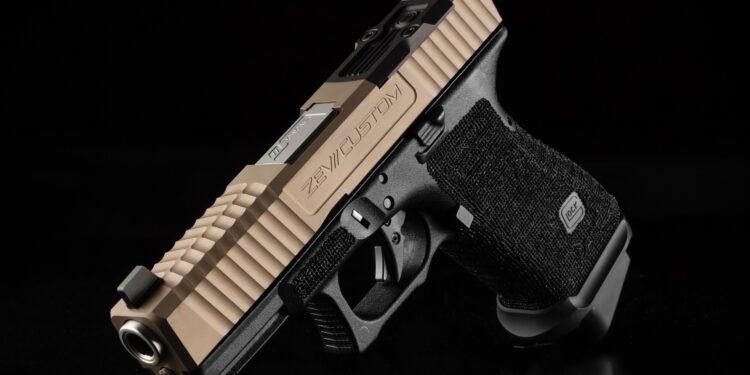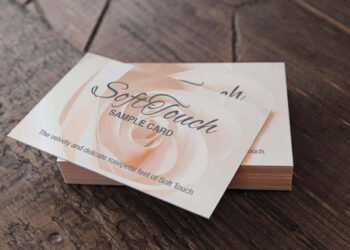The Importance of Accuracy
High accuracy with your Glock 9mm can significantly enhance your shooting experience. Accurate shooting relies on a blend of the correct posture, grip, and aiming techniques. Consistent practice is essential to mastering these elements. The Glock 19 9mm offers a reliable platform for those looking to improve their skills, whether for competitive shooting or personal defense. One fundamental aspect of shooting accuracy is having a sturdy and balanced stance. The most popular isosceles stance aligns the shoulders and hips and distributes weight evenly on both feet. This stability reduces the impact of recoil and helps maintain control. Additionally, having a firm yet flexible grip on the firearm ensures greater control and minimizes finger movement during trigger pulls. The key to improving accuracy starts with understanding your firearm. Familiarizing yourself with the Glock 19 9mm design and handling helps you anticipate its behavior during firing. This familiarity makes it easier to adjust and refine your techniques over time.
Essential Maintenance Tips
Regular maintenance ensures your Glock 19 9 mm’s longevity and reliability. Some fundamental practices are cleaning it after each use, inspecting parts for wear and tear, and timely replacing worn-out components. According to the National Shooting Sports Foundation, regular maintenance can prevent malfunctions and extend the firearm’s life.
Here are some essential maintenance tips:
- Cleaning: Always clean your Glock after each use. It includes cleaning the barrel, slide, and frame to remove residue.
- Inspection: Frequently inspect for indications of damage and deterioration. Inspecting the recoil spring and other moving parts ensures that any damage is identified early.
- Lubrication: Use suitable lubricant on the moving components to guarantee seamless function. A few drops of high-quality gun oil can significantly enhance the firearm’s Performance and longevity.
- Replacement: Regularly replace worn-out parts like recoil springs to maintain optimal performance. Following the manufacturer’s recommendations for part replacements can prevent unexpected malfunctions.
Neglecting maintenance can decrease Performance and potentially jeopardize safety.
Safety First: Best Practices
Safety should always be a top priority. Familiarize yourself with the basic safety rules, treating every gun as if loaded, and being aware of your target and what is beyond it. Correct storage is crucial to avoid unauthorized entry. You can find detailed safety guidelines from organizations.
Here are some additional safety practices to keep in mind:
- Education: Take a firearm safety course to enhance your knowledge and skills. These courses typically cover many safety practices and provide hands-on training.
- Storage: Store your firearm securely in a safe or lock away from children and unauthorized persons. Keeping ammunition separate from the firearm adds an additional layer of safety.
- Situational Awareness: Always be aware of your environment when handling your firearm. Pay attention to your surroundings and ensure you are in a safe and controlled environment.
Safety drills can also be a valuable part of your practice routine. Regularly simulating safety scenarios can reinforce the habits and behaviors that will help keep you and those around you safe.
Benefits of Dry Fire Practice
Dry fire practice involves simulating firing a firearm without live ammunition. It’s an excellent way to improve trigger control, aiming, and other essential skills. Incorporating regular dry fire sessions into your routine can be a game-changer for overall Performance. Dry fire practice allows you to frequent your training without the associated costs of ammunition and range fees.
Here are some benefits of dry fire practice:
- Trigger Control: Focus on smooth trigger pulls without the recoil distraction. This practice helps in developing muscle memory for an even and predictable press.
- Aiming: Practice proper sight alignment and sight picture. Repeatedly lining up your sights and maintaining accuracy becomes a habit translating into live-fire scenarios.
- Cost-Effective: Dry firing can save money on ammunition while still improving your skills. It can complement live fire practice by refining the basics and preparing you for more expensive range sessions.
- Convenience: You can practice in your home without needing a range. This accessibility means you can train more frequently and effectively.
To maximize the effectiveness of dry-fire training, it is recommended to utilize snap caps or dummy rounds to accurately replicate the sensation of handling a loaded gun. Remember to observe all safety protocols, even during dry fire, to ensure a safe practice session.
Advanced Shooting Techniques
Once you’ve mastered the basics, it’s time to explore advanced shooting techniques. Experiment with different stances, grips, and drills to find what works best for you. Participating in shooting competitions can also provide valuable experience and improve your skills under pressure. Competitions often challenge shooters with various scenarios, helping them learn to adapt and perform under different conditions.
Some advanced techniques to consider include:
- Rapid Fire: Practice maintaining accuracy while shooting quickly. Building the ability to shoot rapidly while hitting your target is essential for competitive and defensive shooting.
- Movement Drills: Work on shooting while on the move to simulate real-world scenarios. Drills that involve moving to cover, shooting from different positions, and engaging multiple targets will build confidence and adaptability.
- Stress Inoculation: Train under simulated stress to build confidence and control. Using a timer, adding physical exertion before shooting, or creating complex drills can simulate stress and help you perform better when it counts.
True proficiency with your Glock 19 9mm comes from continually challenging yourself and evolving your skills.
Read more interesting articles on Ebeak


















